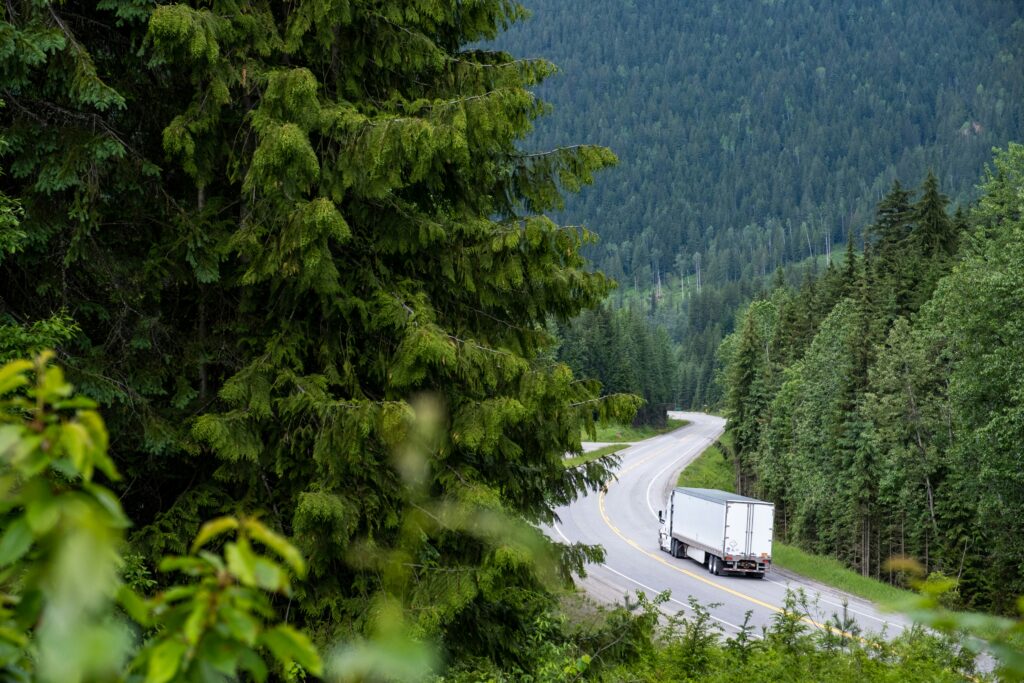True North, Strong and Green: Shop Canada to Take Climate Action
Apr 9, 2025
The climate is changing, and where we spend our dollars has never mattered more. Supporting Canadian businesses and buying Canadian-made products not only strengthens our economy but also drives sustainable practices with global benefits. In this blog, we explore five powerful ways that shopping Canadian is a direct action against climate change.
1. Lower Transportation Emissions
Buying Canadian means fewer kilometers traveled and less pollution. When you support local businesses and Canadian-made products, you help cut down on the carbon footprint associated with long-haul shipping. Even choosing products from a neighboring province can significantly reduce emissions compared to imports that have traveled thousands of kilometers by air, sea, or road. By keeping supply chains shorter, shopping Canadian is a simple yet impactful way to lower transportation-related emissions.

2. Stricter Environmental Regulations
While there is still progress to be made at the policy level to strengthen sustainability across Canadian businesses, Canada already upholds higher environmental standards than many of the countries we import goods from. Companies operating in Canada must comply with strict regulations on waste management, pollution control, and energy efficiency.
Two key policies driving Canada’s climate commitments are the Paris Agreement and the Canadian Net-Zero Emissions Accountability Act. Together, these legally binding commitments mandate that Canada achieve net-zero emissions by 2050. The Net-Zero Emissions Accountability Act was developed through public and Indigenous consultation, provincial input, and expert analysis by the Canadian Climate Institute. This act outlines Canada’s domestic policies, climate targets, and key measures to be submitted to the United Nations, paving the way for a net-zero future.
Other Canadian climate initiatives include:
- A national ban on single-use plastics
- Stronger habitat protection laws than in many other countries
- Stricter environmental assessments for resource extraction, such as mining, oil, and gas, compared to countries like the United States
By choosing Canadian-made products, consumers can be confident that the companies manufacturing within Canada are adhering to environmental regulations that exist to support a net-zero future.
3. Strengthen the Circular Economy
Buying local helps keep resources circulating within Canada, strengthening industries focused on reuse, repair, and recycling while reducing waste. This reduces the need for new raw materials and minimizes waste through practices like reuse, repair, and recycling. When you see “Made in Canada” on a clothing tag, it’s more than just a label; it’s a sign of quality, ethical production, and environmental responsibility. A strong local supply chain means less reliance on disposable, mass-produced imports, so the more you shop “Canadian-made”, the more confident you can feel that your product is contributing to a circular economy.
The Federal Government of Canada actively promotes a circular economy through programs like Extended Producer Responsibility (EPR), which hold companies accountable for managing the waste their products generate. Two notable examples of this are:
- Recycling and Upcycling Initiatives: Recycling Ontario enables businesses to send used materials back into the supply chain, preventing them from ending up in landfills.
- Design for circularity: Saskatchewan-born Tentree designs clothing using sustainable materials and offers a take-back program that encourages shoppers to send their old products back for recycling or repurposing.
4. Protect Natural Resources
Many Canadian business actively support local conservation efforts by funding reforestation or wildlife conservation programs, or by committing to sustainable practices. Canadian-owned companies such as The Printing House and Lush Fresh Handmade Cosmetics integrate sustainability into their operations, allowing consumers to contribute to climate action simply by choosing their products. The environmental initiatives adopted by these companies, whether voluntarily or as part of regulatory mandates, help protect Canadian ecosystems. This commitment translates to cleaner air, water, and healthier forests across the country.

5. Encourage Climate-Conscious Innovation
By choosing to spend on eco-friendly, locally made products, Canadians incentivize businesses to develop greener solutions, such as adopting eco-friendly manufacturing technologies and transitioning to renewable energy sources. The more Canadians purchase sustainable products, the more businesses are motivated to invest in eco-friendly research and development, driving innovation in greener materials, energy-efficient processes, and sustainable designs. For instance, EcoloPharm in Quebec is pioneering 100% recyclable pharmaceutical packaging, spurring innovation in sustainable healthcare packaging. Furthermore, this push for green innovation creates more green jobs across Canada, as the demand for environmental expertise continues to grow in a variety of sectors, embedding sustainable practices as a standard in business operations
Supporting Canadian businesses and purchasing Canadian-made products is a powerful way to take climate action, and it has perhaps never been more important. Whether you choose to buy from local suppliers within your community or from companies based elsewhere in Canada (rather than internationally), your purchase can contribute to a positive impact. So, whenever possible, shop Canadian—true north, strong and green.
Interested in exploring how choosing to shop Canadian can be a form of climate action with your high school students? Check out our Climate Action Project program and dive farther into this topic!
Author: Katelyn Plant, Marketing & Communications Manager, The Gaia Project
References:
1. Canada, Service. “Government of Canada.” Canada.Ca, / Gouvernement du Canada, 6 Jan. 2025, www.canada.ca/en/services/environment/weather/climatechange/climate-plan/2035-emissions-reduction-target/next-netzero-milestone.html.
2. “Recycling in Ontario .” Circular Materials – Advancing the Circular Economy, Circular Materials, 21 Nov. 2024, www.circularmaterials.ca/provincial-programs/recycling-in-ontario/.
3. “Circularity.” Tentree, www.tentree.ca/pages/circularity. Accessed 28 Mar. 2025.
4. “Well-Bring, Done Well: Eco-Friendly Pharmaceutical Packaging Solutions.” EcoloPharm, 2 Dec. 2024, ecolopharm.com/en/.
5. Canada, Environment and Climate Change. “The Paris Agreement.” Paris Agreement – Canada.Ca, / Gouvernement du Canada, 6 Jan. 2016, www.canada.ca/en/environment-climate-change/services/climate-change/paris-agreement.html.
Follow us on social for more stories, news and updates:
Facebook: www.facebook.com/gaiaproject
Instagram: @thegaiaproject_
X: @gaiaproject
LinkedIn: @thegaiaproject-projetgaia
TikTok: @thegaiaproject_